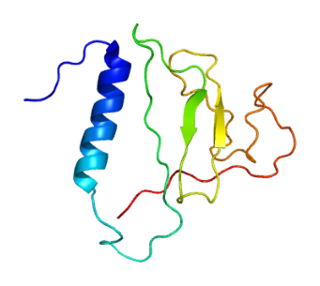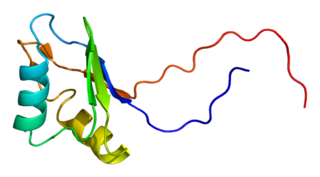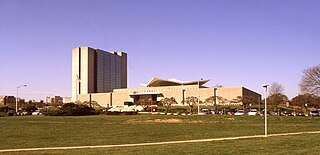
Epigen also known as epithelial mitogen is a protein that in humans is encoded by the EPGN gene.

Toll-like receptor 6 is a protein that in humans is encoded by the TLR6 gene. TLR6 has also been designated as CD286.

Insulin-like growth factor-binding protein 2 is a protein that in humans is encoded by the IGFBP2 gene.

Insulin-like growth factor-binding protein 5 is a protein that in humans is encoded by the IGFBP5 gene. An IGFBP5 gene was recently identified as being important for adaptation to varying water salinity in fish.

Platelet-derived growth factor subunit B is a protein that in humans is encoded by the PDGFB gene.

Insulin-like growth factor-binding protein 6 (IGFBP-6) is a protein that in humans is encoded by the IGFBP6 gene.

Insulin-like growth factor-binding protein 1 (IBP-1) also known as placental protein 12 (PP12) is a protein that in humans is encoded by the IGFBP1 gene.

Olfactory receptor 8J3 is a protein that in humans is encoded by the OR8J3 gene.

Solute carrier family 12 member 7 is a protein that in humans is encoded by the SLC12A7 gene.

Insulin-like growth factor 2 mRNA-binding protein 2 is a protein that in humans is encoded by the IGF2BP2 gene.

Fibroblast growth factor 16 is a protein which in humans is encoded by the FGF16 gene.

Early growth response protein 4 (EGR-4), also known as AT133, is a protein that in humans is encoded by the EGR4 gene.

RAS-like, estrogen-regulated, growth inhibitor is a protein in humans that is encoded by the RERG gene.

Ribosomal protein S6 kinase, 90kDa, polypeptide 6 is a protein in humans that is encoded by the RPS6KA6 gene.

Inositol monophosphatase 3 also known as inositol monophosphatase domain-containing protein 1 (IMPAD1) is an enzyme that in humans is encoded by the IMPAD1 gene.

Solute carrier family 16, member 5 is a protein in humans that is encoded by the SLC16A5 gene.

Solute carrier family 15, member 4 is a protein in humans that is encoded by the SLC15A4 gene.

Growth regulation by estrogen in breast cancer-like is a protein that in humans is encoded by the GREB1L gene.

Interleukin 17 receptor D is a protein that in humans is encoded by the IL17RD gene.

IGF like family receptor 1 is a protein that in humans is encoded by the IGFLR1 gene.























